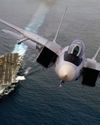Essayer OR - Gratuit
Flying the FW 190
Flight Journal
|Annual 2020
A legend gets checked out in the Butcher Bird

In the fall of 1937, the Technical Department of the German Air Ministry decided to develop a replacement for the Messerschmitt 109. At the end of the year, after discussions with Focke-Wulf’s chief designer Kurt Tank, the Air Ministry awarded a contract to the company. The Ministry specified the need for a fighter whose performance would be significantly better than that of both the 109 and the British Spitfire.
Tank realized that he would require the most powerful engine available to him, and this requirement clearly pointed him toward the 18-cylinder, two-row radial BMW 139, which offered 325 more horsepower than its nearest rival, the 12-cylinder, in-line, liquid-cooled DB 601. This decision surprised
Luftwaffe officials but was accepted because of the uncertainty of the future supply of the Daimler-Benz engine (which had previously been projected as the powerplant for the 109 fighter, the twin-engine Me 110, Arado 240 fighter, and several other combat aircraft).
The Focke-Wulf design team began with certain definite ideas: They would need a strong, wide-track landing gear, both to with stand the vertical velocity required of the new fighter/bomber and also to avoid the severe directional control problems that plagued the 109 during takeoffs and landings. Tank also declared that when he was a soldier in WW I, he had learned that military equipment must be simple, robust, reliable, and easy to maintain. He was determined to apply those standards to the new aircraft—designation “FW 190.”
Cette histoire est tirée de l'édition Annual 2020 de Flight Journal.
Abonnez-vous à Magzter GOLD pour accéder à des milliers d'histoires premium sélectionnées et à plus de 9 000 magazines et journaux.
Déjà abonné ? Se connecter
PLUS D'HISTOIRES DE Flight Journal

Flight Journal
ELLIPTICAL ELEGANCE
Flying and evaluating the Seafire Mark III
4 mins
November - December 2025

Flight Journal
IRON DOG
Fighting the Pacific and the P-39 at the same time
14 mins
November - December 2025

Flight Journal
Fighter Pilots: A Warrior Clan
TAKE A HARD LOOK at the two young men in these photos. Do they look as if they were bent on killing one another? On the left we have a young, unknown enlisted Japanese pilot standing in front of a Nakajima Ki-27 \"Nate,\" one of Japan's earliest monoplanes that led to the much vaunted Zero.
3 mins
November - December 2025

Flight Journal
KEN WALSH THE FIRST CORSAIR ACE
Medal of Honor pilot's combat adventures
12 mins
November - December 2025

Flight Journal
Big Chief's Little Chief
Thunderbolt action with the Wolf Pack
11 mins
November - December 2025

Flight Journal
ENEMY PILOTS SPEAK Voices from the other side
All too often American students of air warfare forget that enemy aircraftwhether Messerschmitts or MiGs-were flown by human beings with the same motivations and traits as Allied airmen. More often than not, the only difference between friend and foe was the paint on the airplane and where they landed. Therefore, we've assembled a variety of accounts from WW II Axis fighter pilots, men who were more than simply targets.
11 mins
November - December 2025

Flight Journal
FLYING THE FW 190
A legend gets checked out in the Butcher Bird
15 mins
November - December 2025

Flight Journal
DOUBLE-THEATER ACE
The fearless missions of legendary fighter pilot Col. John D. Landers
12 mins
November - December 2025

Flight Journal
WARBUG IN THE PACIFIC
Surviving combat in a Stinson OY-1/L-5
10 mins
September - October 2025

Flight Journal
WINGS OF THE FLEET
Celebrating the U.S. Navy's 250-year legacy
9 mins
September - October 2025
Translate
Change font size

